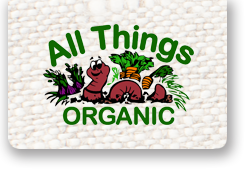Vermi-Composting – What & Why
Worm Factories
Vermi-composting is the process of using red wigglers, European nightcrawler and other surface-feeding worms and decomposer organisms to consume our organic waste and turn it into a great natural fertilizer called vermi-compost. Vermi-composting is simple, requires very little to get started and anyone can do it. Although a simple box or container retro-fitted with air holes is all you need to keeps worms and decomposing food scraps in one area, worm composting systems like the ATO Worm Tower , The Worm Factory and the Worm Factory 360 are superior systems in many ways. Designed and built to automatically separate worms from their castings, modern vermi-composting systems are equipped with specialized trays that allow worms to travel upwards to their food source. As the worms in your bin migrate upwards, they leave behind their nutrient-rich castings, thereby naturally eliminating the mess, hassle and disturbance involved with sorting through worms and their tiny eggs, not to mention the unfinished compost, decomposing food waste, bugs and microbes that are all part of a worm bin environment.
Another major advantage of a multi-tray worm bin system is that you can expand your system and increase your green waste consumption without increasing the system’s footprint. The worm bin expands vertically every time a tray fills and you add another, leaving the bottom bins to hold and finish castings that will replenish your soil and nourish your plants. The worms in your bin will adjust their population size according to their food supply and environment, so the more trays you add, the more productive - the greener - you will be. Worm populations are completely self-regulating, letting you customize the size of the system to best fit your household.
You can keep your worm bin indoors or out, depending on your needs and preferences, and of course, depending on the weather where you live. Worm bin environments will be productive in temperature ranges of 5C to 26C, (40 to 75F), with the optimum temperature being 20C (68F). Worms will not withstand sub-zero temperatures or in locations of direct sun or extreme heat. You can feed your worms all of your fruit and veggie waste, as well as egg shells, coffee grounds, filters and tea bags. They require very little attention, they are easy to keep healthy and productive, and they don’t mind if you go on vacation.
Red wigglers and European night crawlers are the two species of worms that are most recommended for raising in a worm bin, and are the only two species of composting worms that we grow at All Things Organic. These two species are voracious eaters with long digestive tracts, and are extremely happy to spend the day eating your organic waste, excreting worm castings and making more worms, providing you with a steady supply of top-quality compost. As you feel your trays and add more, your worm community will expand to fit the size of its home, so you’ll never have to worry about over-population. The taller your system, the more productive it will be and the more organic waste you will be able to divert from your garbage and your community’s landfills. The soil in your home and gardens will be richer, healthier and much less susceptible to disease.
Vermi-Composting Advantages:
- Worm bins divert valuable resources away from landfills and redirect it to your soil footprint
- Worm castings make soil healthier and stronger and create more vigorous and productive plants and gardens
- Worm bins are fun to watch as worms work soundlessly to eat your garbage, creating zero odour in the process
- You can feel good knowing you are recycling nutrients instead of wasting them
Many worm bin owners keep a food waste container in the kitchen to transport food to the worm bin. Check out the kitchen compost collectors available at the ATO Store. Each model is equipped with a carbon filter in the lid to eliminate odors; some even have removable plastic inserts that can be easily washed.
Keeping Your Worms Outdoors
If you decide to keep your worms outside in an environment that gets extremely cold, you will need to construct and insulate an outdoor bin. One method is to surround the bin with straw bales, adding loose straw on top of the decomposing material, as well as on top of the lid. (Be sure that air can get in around the insulation.) Contact us for more information about building a bin outdoors.
Moisture
Red wigglers and European night crawlers absorb oxygen through the mucus layer on their skin so they need moist conditions in order to breathe. If conditions in their environment dry out, they become stressed and may die. If you’re setting up a bin for them, try to keep the bedding at around a 75% moisture content, which is about as moist as a wrung-out sponge. With typical tray-system worm bins, you will likely never need to add water, as there is sufficient moisture in the food waste that you will be regularly feeding your worms.
Choosing The Right Worm For The Job
Surface dwelling worms, like the Red Wigglers (Eisenia fetida) and European Night Crawlers (Eisenia hortensis) from All Things Organic, eat organic matter that falls onto the soil surface, such as leaves, fruit, manure, etc. These worms have adapted perfectly to the job of cleaning up waste.
How Many Worms?
For a small household bin, you'll want to start with at least 1 pound of worms. Approximately 1,000 worms of all ages and sizes weigh about a pound. The worm bin can accommodate many more worms, and your worms will increase in number if you’ve made their home comfortable (temperature wise) and if food is available. Next to eating, reproducing is one of their favorite activities!


